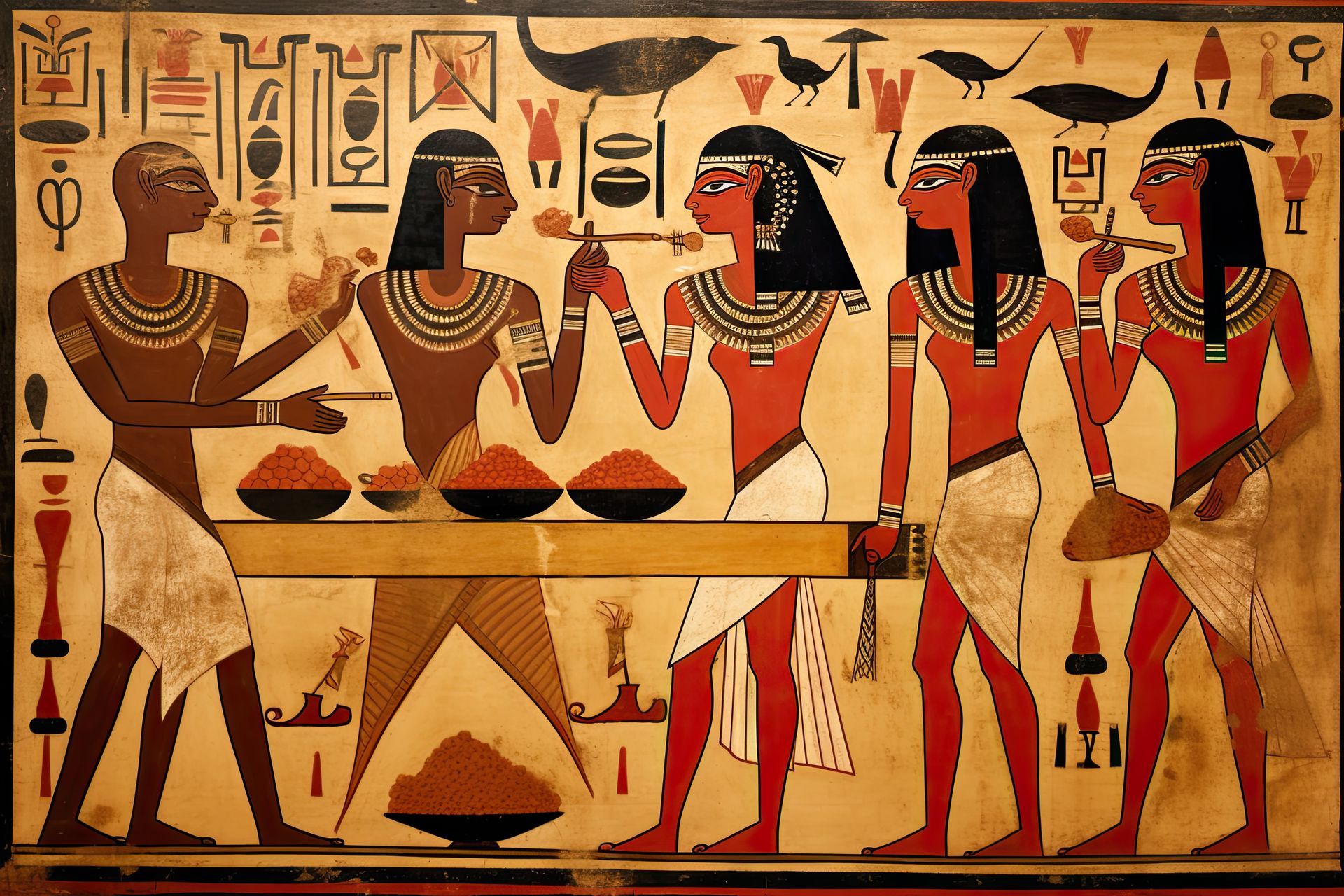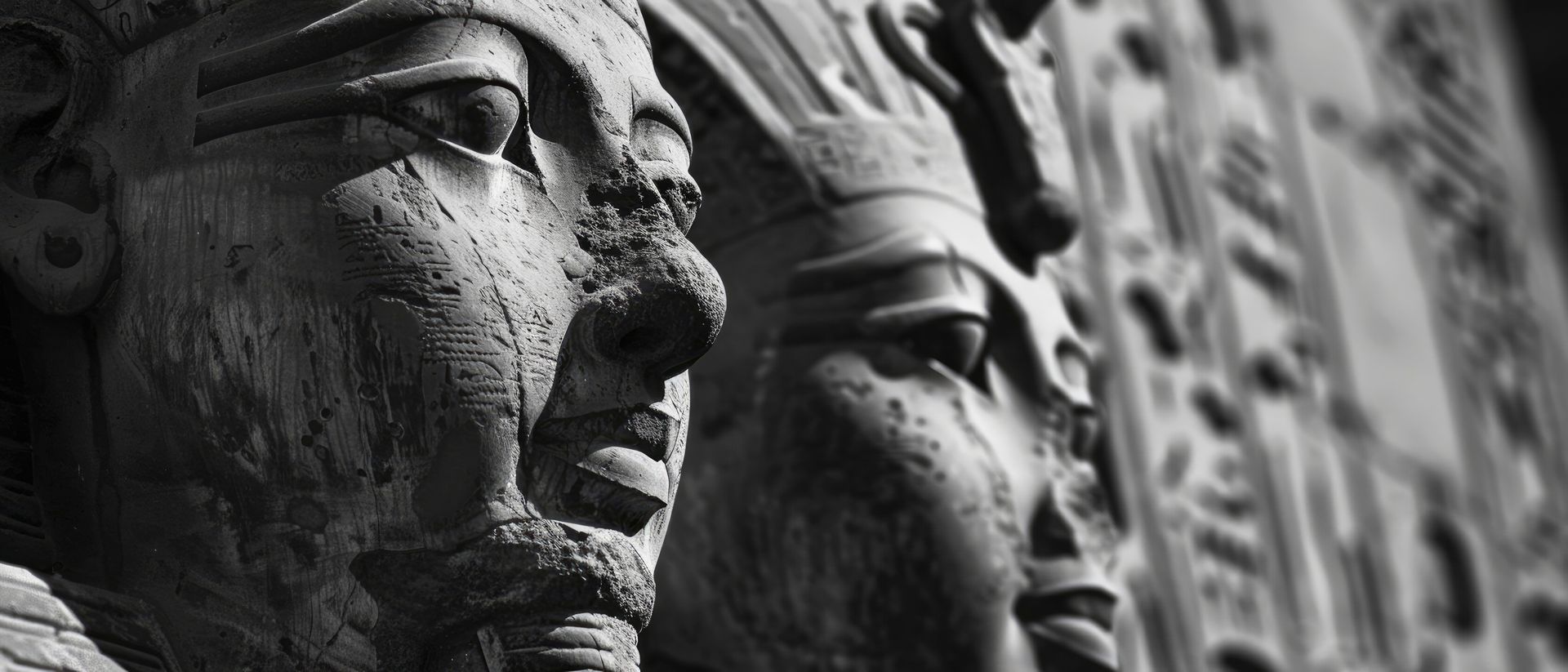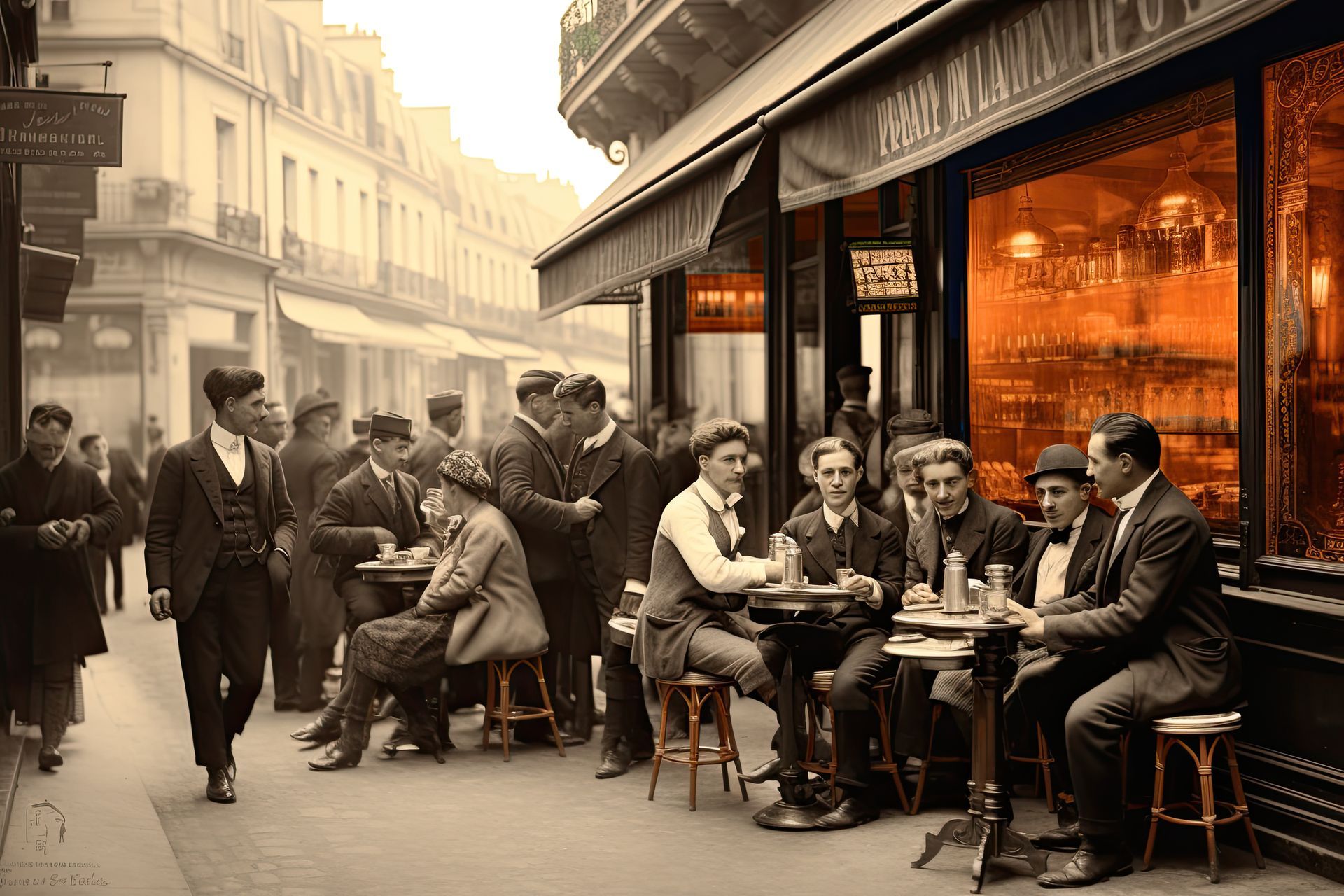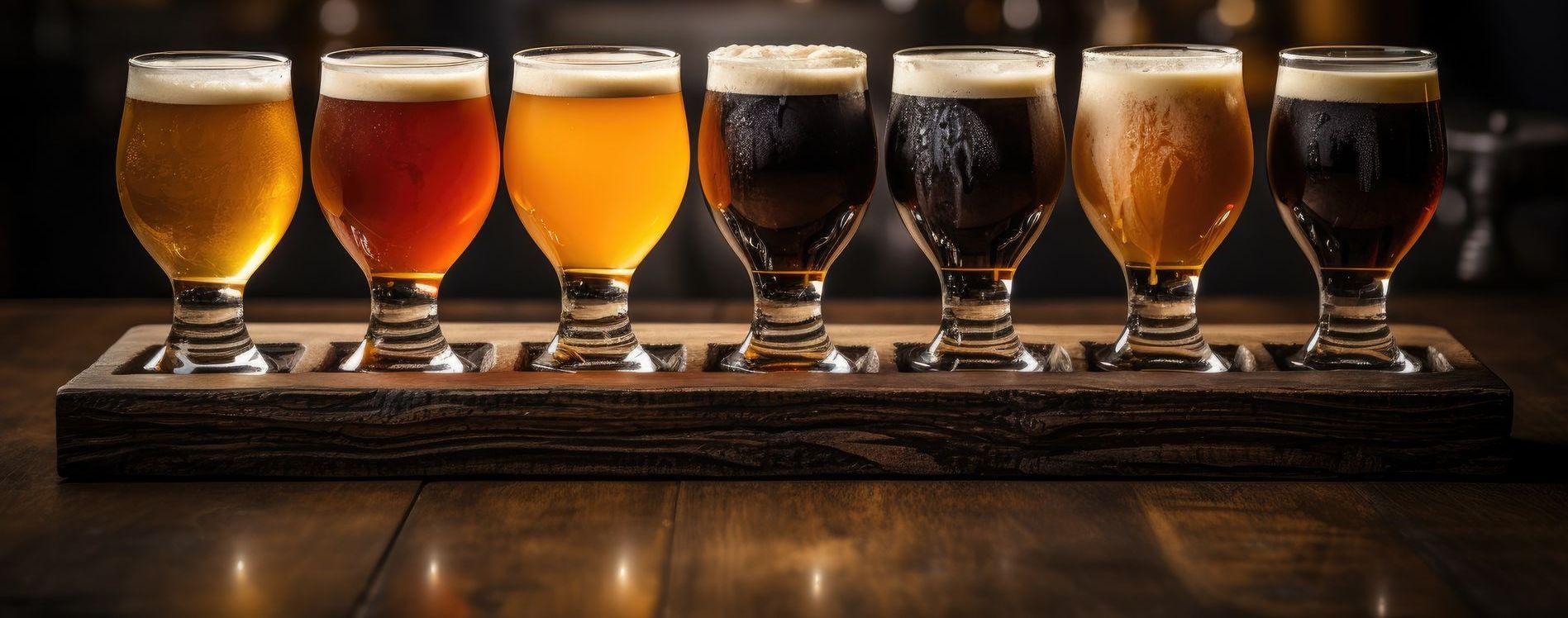Beyond the Grapes: How Wine and Beer Shaped Napa Valley's Identity

The discovery of wine is steeped in history, with stories as intriguing as the drink itself. One ancient Persian fable humorously recounts how wine was first introduced, beginning with a despondent princess who, decided to end her life, drank what she believed to be poison. Instead of meeting her end, she blissfully enjoyed a state of euphoria and discovered a new way to cope with the pressures of royal life. This tale reflects how wine was introduced to the elites and then transitioned from the elites to the masses, becoming a source of joy and comfort for many.

Grapes, with their many varieties, have earned a prestigious place among wine lovers, and their evolution continues to fascinate winemakers, connoisseurs, and novelists. The ancient Egyptians, known for their meticulous record-keeping, were the first to document the winemaking process. Archaeologists have uncovered clay tablets within the burial chambers of the elites, detailing the harvest and consumption of grapes and wine—a testament to the importance of this beloved beverage throughout history.

The Sumerians are believed to have been brewing beer as far back as 4,000 BCE, with some evidence suggesting even earlier dates. The oldest known recipe for beer, the "Hymn to Ninkasi," a song that also served as an instructional text, dates back to around 1800 BCE. However, the Sumerians likely began brewing beer centuries before this, possibly around 3,500 to 3,100 BCE, during the early phases of their civilization in ancient Mesopotamia.
Wine and beer, both ancient social beverages, have served as central components of human culture and community for millennia. Wine, with its deep roots in rituals, celebrations, and the daily life of ancient civilizations like the Egyptians, Greeks, and Romans, has always been associated with refinement, luxury, and even spirituality. It symbolized wealth and status, and its production and consumption were often linked to the elite classes.
Beer, on the other hand, has a history that dates back to the Sumerians and was a staple of everyday life in many ancient cultures, including Mesopotamia and Egypt. It was a communal drink, accessible to all social classes, and played a crucial role in social gatherings and religious offerings. The simplicity of its ingredients and the relative ease of its production made beer a popular choice for many ancient societies.

In Napa Valley, this historical connection to wine and beer is reflected in the modern landscape. While wine undeniably remains the star, drawing visitors from around the world to experience its storied vineyards and tasting rooms, beer is also making its mark. Craft breweries are garnering respect and offering visitors an alternative way to explore the region’s rich history of fermentation. Both beverages share a common lineage as ancient social drinks that brought people together, and this shared heritage is celebrated today in Napa Valley, where visitors can appreciate the artistry and tradition behind both wine and beer. The growing acceptance of beer among tourists complements the region’s renowned wine culture, offering a more diverse and enriching experience for all who visit.
Whether your curiosity of Napa Valley is sparked by a love for wine or an interest in beer, your Napa Valley Transportation will be essential to maximizing your valley experience.

The Rich and Vibrant History of Wine in Napa and Sonoma Valley
The history of wine in Napa and Sonoma Valley is a tale of vision, perseverance, and transformation. It all began in the mid-1800s when these now-renowned regions were little more than rugged, undeveloped land, far from the bustling centers of the East Coast. Yet, it was here that a few enterprising pioneers, driven by a passion for viticulture, planted the first vines that would eventually lead to global recognition. George C. Yount, who established the first vineyard in Napa in 1838, and Agoston Haraszthy, who brought European vines to Sonoma in the 1850s, laid the foundations for what would become two of the most celebrated wine regions in the world. Their early efforts were not just agricultural experiments; they were the beginning of a cultural and economic transformation that would shape the identity of these valleys for generations to come.
The story of wine in Napa Valley begins in 1838 when George C. Yount, a settler with a pioneering spirit, planted the first vineyard in what would later become Yountville. His efforts were more experimental than intentional, but little did he know he was sowing the seeds for a wine revolution. By the 1860s, a man named Charles Krug—considered by many to be the father of Napa Valley wine—established Napa’s first commercial winery. Krug’s focus on quality and innovation set the stage for what would become a thriving industry.
History of Sonoma Valley Wine Country

Meanwhile, just a bit westward, Sonoma Valley was developing its own love affair with the vine. Agoston Haraszthy, a colorful Hungarian count who arrived in California in 1849, is often credited as the father of California viticulture. After dabbling in various business ventures, Haraszthy purchased a 500-acre estate in Sonoma, where he planted imported European grape varieties. He founded Buena Vista Winery in 1857, which remains one of the oldest commercial wineries in California. Haraszthy’s adventurous spirit and willingness to experiment with different grape varieties were instrumental in establishing Sonoma as a wine region to watch.
Fast forward to the early 20th century, and the Napa and Sonoma Valleys were already dotted with vineyards and wineries. But just as the wine industry began to flourish, it faced its greatest challenge: Prohibition. From 1920 to 1933, the production and sale of alcoholic beverages were banned in the United States, a devastating blow to the wine industry. Many vineyards were abandoned, and the winemakers who remained had to pivot to producing sacramental wines or converting their operations to survive. Yet, the resilient spirit of Napa and Sonoma winemakers prevailed, and once Prohibition was repealed, they were ready to get back to what they did best.
The World Stage
The post-Prohibition era saw a slow but steady resurgence of wine production in Napa and Sonoma. However, it wasn’t until the 1970s that these regions truly stepped into the global spotlight. The turning point came in 1976, when the now-legendary "Judgment of Paris" wine tasting shook the wine world to its core. In this blind tasting, California wines went head-to-head with some of the best French wines, and to everyone’s surprise—especially the French judges—the California wines emerged victorious. Napa Valley’s Chateau Montelena Chardonnay and Stag’s Leap Wine Cellars Cabernet Sauvignon took top honors, proving that California could produce wines of world-class quality.
This victory sent shockwaves through the wine world and put Napa and Sonoma Valleys on the map as premier wine regions. The recognition spurred a renaissance in winemaking, with both regions experiencing a boom in the number of wineries and vineyards. Winemakers, inspired by the success of their peers, began to experiment with new techniques, grape varieties, and blends, resulting in a golden age of wine innovation.
Today, Napa and Sonoma Valleys are synonymous with exceptional wine. Napa, known for its bold Cabernet Sauvignons, and Sonoma, celebrated for its diverse microclimates and varietals, have become must-visit destinations for wine lovers from around the globe. The regions offer more than just wine; they provide an experience—a journey through history, terroir, and the passion of the people who craft each bottle.
As you immerse yourself in the history of Napa and Sonoma, remember that you’re not just studying the past—you’re part of an ongoing story. Every sip of wine you take, every vineyard you visit, connects you to the rich tapestry of this incredible region. So, raise your glass to the pioneers who planted the first vines, the innovators who took risks, and the resilient spirits who refused to give up. Cheers to the past, present, and future of Napa and Sonoma Valley wine!
The Overlooked Brew: The Rich History of Beer in Napa Valley
When you think of Napa Valley, the first thing that likely comes to mind is wine—the rolling vineyards, the elegant tasting rooms, the storied history of world-class Cabernet Sauvignon. But what if I told you that beer has its own unique and fascinating history in this region, too? As a future sommelier, it’s important to understand that the story of Napa Valley is not just the story of wine, but also of beer—a beverage with ancient roots and a contemporary resurgence that complements, rather than competes with, the valley’s winemaking tradition.
While wine has dominated the cultural and economic landscape of Napa Valley, beer’s history in the region stretches back nearly as far, and its influence has ebbed and flowed over time. To truly appreciate this, we need to look beyond the vineyards and into the brewing kettles, where another kind of fermentation has quietly made its mark on the valley.
The history of beer in Napa Valley is closely tied to the waves of immigration that shaped California during the Gold Rush era. In the mid-1800s, as settlers flooded into California in search of fortune, many brought with them the brewing traditions of their homelands. German, Irish, and English immigrants, in particular, were skilled brewers who saw the potential for brewing beer in this new, fertile land. The earliest breweries in Napa Valley were small operations, often producing beer for local consumption in the growing towns that sprang up to support the agricultural industry.
What about the Cicerone ?

A Cicerone is to beer what a sommelier is to wine—an expert who has mastered the art and science of their chosen beverage. Just as sommeliers guide wine enthusiasts through the complexities of wine selection, pairing, and tasting, Cicerones are the trusted authorities on all things beer. They possess an in-depth understanding of beer styles, brewing techniques, flavor profiles, and proper serving practices.
The Cicerone certification program, much like sommelier training, is rigorous and designed to ensure that those who earn the title are truly knowledgeable and skilled. Whether recommending the perfect beer to complement a meal or educating others on the subtleties of craft brewing, a Cicerone plays a crucial role in elevating the beer experience, helping to ensure that beer is appreciated with the same level of sophistication and respect traditionally reserved for wine.
1870's Beer Movement

One of the first commercial breweries in Napa Valley was the Napa Valley Brewing Company, established in the 1870s. The brewery catered to a thirsty population of workers and settlers who needed a refreshing, lower-alcohol beverage after long days of laboring in the fields and vineyards. Beer was often consumed in local saloons, which became social hubs where people gathered to share news, discuss business, and unwind. These early breweries played a significant role in the community, providing a gathering place and a source of local pride.
However, as the 20th century dawned, Napa Valley’s focus shifted increasingly toward wine. The Prohibition era (1920-1933) dealt a severe blow to both beer and wine production, but while many wineries managed to survive by producing sacramental wine or converting to other industries, breweries faced a more difficult path. The number of breweries in Napa Valley dwindled, and for many years, the region became almost exclusively associated with wine.
Not So Fast- The Beer Comeback!

Just as wine in Napa Valley saw a resurgence in the latter half of the 20th century, so too did beer—though its revival took a little longer. The craft beer movement that began in the 1980s and 1990s across the United States didn’t initially make much of a splash in Napa Valley. The region was so synonymous with wine that it was difficult for beer to gain a foothold. However, as the craft beer movement grew, so did the interest in artisanal, locally brewed beer. Beer lovers and brewers began to realize that Napa Valley, with its rich agricultural heritage, could be an ideal place for brewing beer that was just as carefully crafted and celebrated as the valley’s wines.
In recent years, several breweries have sprung up in Napa Valley, carving out a niche for themselves in this wine-centric region. Breweries like Napa Smith Brewery and Fieldwork Brewing Company have helped put Napa Valley on the map for beer enthusiasts, offering a range of styles from crisp lagers to complex ales. These breweries often draw on the region’s agricultural bounty, incorporating local ingredients like hops, grains, and even wine grapes into their brews, creating unique flavors that reflect the terroir of the valley—much like wine.
What’s particularly interesting about the relationship between wine and beer in Napa Valley is how the two industries have begun to intersect in creative ways. Some wineries have started to experiment with brewing, and vice versa. For example, some breweries age their beers in used wine barrels, imparting subtle wine characteristics to the beer, while some wineries produce beer-wine hybrids, blending the best of both worlds. This cross-pollination of ideas and techniques highlights how beer and wine can coexist and even enhance each other, rather than being seen as competitors.
As aspiring sommeliers, it’s important to keep an open mind about the beverages that make up the rich tapestry of Napa Valley’s history. Understanding the history of beer in Napa Valley not only broadens your knowledge but also deepens your appreciation for the region as a whole. Beer may not have the same global reputation as Napa Valley wine, but it is an integral part of the area’s history and culture—a history that is still being written today as the craft beer movement continues to grow.

So, as you explore the vineyards and wineries of Napa Valley, take a moment to consider the history bubbling away in the breweries. Just like the wine in your glass, the beer in the valley is the product of creativity, hard work, and a deep respect for tradition. And who knows? You might just find that a cold, locally brewed beer is the perfect complement to a day spent in wine country. Cheers to that!
The Best of Both Worlds

Wine and beer, though seemingly different, share a deeply intertwined history in Napa Valley, both rooted in the region's rich agricultural heritage and shaped by the pioneering spirit of those who saw potential in the land. While wine has long been the star of the valley, beer has quietly made its mark, contributing to the social and cultural fabric of the area.
Today, the resurgence of craft beer alongside the timeless tradition of winemaking offers a more complete picture of Napa Valley’s diverse and evolving beverage landscape. As you continue your journey through this iconic region, don’t limit yourself to just one side of the story—explore both the vineyards and the breweries, and experience the full spectrum of flavors Napa Valley has to offer. So, whether you’re a wine enthusiast or a beer lover, or perhaps a bit of both, raise your glass to the rich history and exciting future of Napa Valley. Cheers to discovering it all!
Ready to explore the rich history and flavors of Napa Valley? Let Napa Valley Transportation be your guide. Whether you’re touring world-renowned wineries or discovering hidden craft breweries, we’ll ensure your journey is as exceptional as the beverages you’ll enjoy. Book your adventure today and experience Napa Valley like never before!
